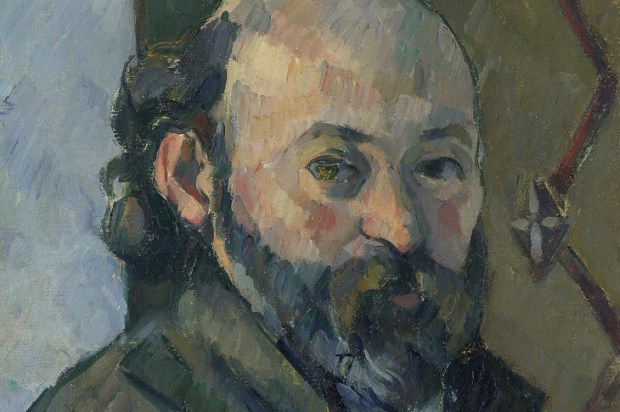A while ago, David Hockney mused on a proposal to tax the works of art stored in artists’ studios. ‘You’d only have to say they weren’t finished, and you are the only one who could say if they were,’ he suggested. ‘There’d be nothing they could do.’ This is the state of affairs examined in Unfinished, a thought-provoking little exhibition at the Courtauld Gallery.
Once upon a time, it was as clear whether a painter had completed a picture as it was whether the gardener had thoroughly mowed the lawn. Indisputably, Perino del Vaga downed tools for some reason halfway through his ‘Holy Family with Saint John the Baptist’ (1528–37). That’s obvious. Some parts are depicted in fine detail, others remain merely drawn outlines on the panel. Yet someone kept it because, even as it is, it’s beautiful.
This is where the topic begins to get complicated. There was a rather crass definition of ‘finished’ that was upheld, for example, at the 19th-century Royal Academy. It meant, roughly, ‘neatly and smoothly brushed all over’ (or polished, in the case of a sculpture). Thus the young Constable was told his landscape required more ‘finish’. But there are many other ways to bring a work to a conclusion.
It seems Rembrandt was the first to proclaim the Hockney doctrine: that a picture was finished if and only if he, its creator, said so. But this generates paradoxes. Why did Rembrandt leave his etching ‘The Artist Drawing from the Model’ (c.1639) as evidently ‘unfinished’ as the Perino del Vaga, with large areas of the plate just barely sketched in outline but about a third carefully elaborated? Perhaps he wasn’t happy with the composition — but in that case, why did he go ahead and print it? Surely it couldn’t be that he actually liked the image as it was? But its blend of ‘finished’ and ‘unfinished’ was fascinating enough to have influenced Picasso’s meditations on the theme of artist and model in ‘The Vollard Suite’.
Move on to the late 19th century and the question gets even more complex. In the case of a late Cézanne such as ‘Turning Road (Route Tournante)’ c.1905 there is, just as in the Perino, plenty of bare, unpainted surface. Did Cézanne intend to add more, and die before he was able to do it? Was he happy with it as it is? Had he even decided? It is impossible to say, but it looks fabulous as it is.
By that time, conventional taste had concluded that Michelangelo’s unfinished works were much better that way. The master himself would probably not have agreed, but he did regard the life of an artist as an unending struggle for perfection.
Michelangelo would also have seen the point of the current exhibition at Sir John Soane’s Museum: Drawn from the Antique. This investigates how the remains of ancient Greek and Roman art were a basis of art education from the Renaissance until the day before yesterday — and a source of inspiration that for artists continued throughout their careers.
According to a 16th-century anecdote, Cardinal Farnese met the septuagenarian Michelangelo one winter day near the Coliseum. He asked him where he was walking to through the snow. ‘I am still going to school to learn,’ the great man replied, meaning that his destination was the ruined amphitheatre.
Only in the 1960s and ’70s did most art schools throw out their casts of classical sculpture. Until then, as Drawn from the Antique illustrates with evocative images, students had for centuries learnt to comprehend the human body by copying these hallowed objects (traditionally, before they were let loose on living models). In a tenderly affectionate pen-and-wash drawing of around 1595, Federico Zuccaro depicted his deceased elder brother Taddeo assiduously studying ancient sculptures as a young artist in Rome, half a century before.
‘A Painter’s Studio’ (c.1646–50) by Michael Sweerts, a Flemish painter living in Rome, shows artists working from three sources: a naked life model, a plaster cast of a flayed cadaver and casts of ancient carving. These last are a wonderful jumbled pile of heads, limbs and torsos — much like the Soane Museum itself, which is a sort of architectural and sculptural collage, unified, like Sweerts’s painting, by the drama of lighting.
There was, however, a danger in excessive copying just as there was in the insistence on a smooth ‘finish’. It could be deadening and, in a great deal of 18th- and 19th-century art, certainly was. Michelangelo pointed out the pitfall soon after having seen the newly rediscovered Laocoön in 1506. This was, he apparently exclaimed, ‘a singular miracle of art’ but, he went on, ‘we should grasp the divine genius of the sculptor’ rather than simply imitate the work. In other words, art cannot be reduced to a simple and easily taught formula.






Comments